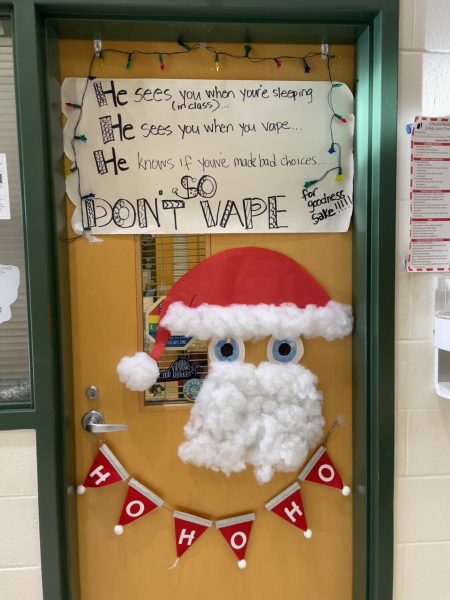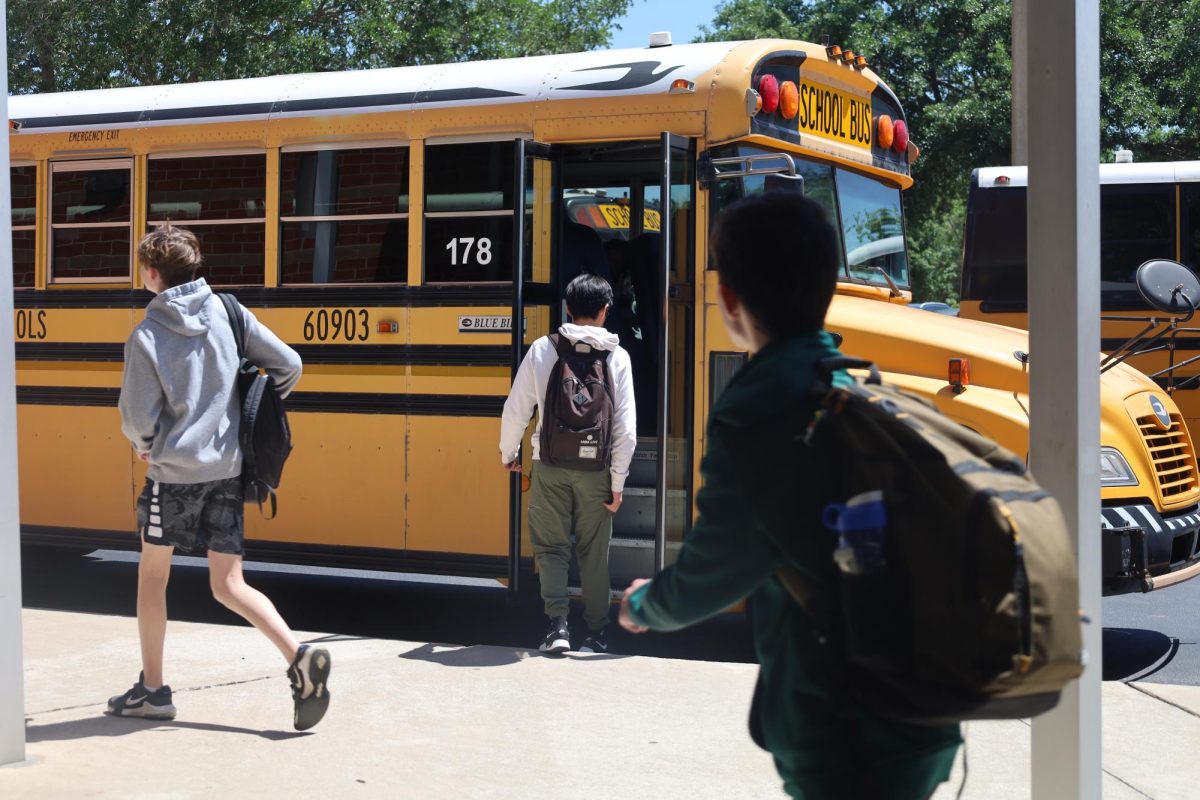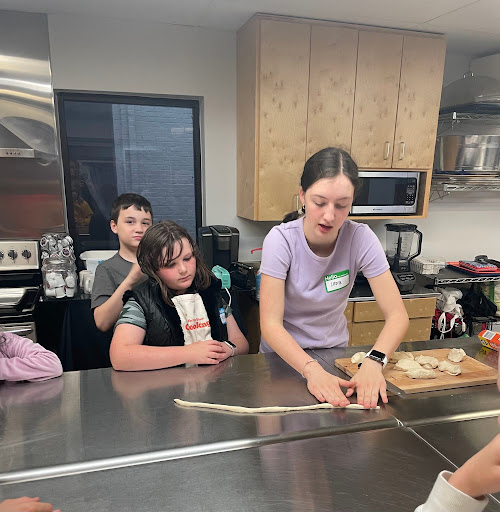Teenagers have always been subject to advertisements from the tobacco industry, but in recent years, the focus has moved from traditional cigarettes to electronic cigarettes or vapes. With an estimated average of one in four high school students actively smoking some form of nicotine daily, addiction to electronics is steadily on the rise among adolescents.
With an average starting age as young as 13 years old, nicotine products are reaching a younger audience at a growing rate. Senior Madelyn Rapone, a former nicotine addict, started vaping in middle school. She recalls what initially made her interested in vaping as well as what led her to the decision to quit.
“It was very popular in middle school and I was very unpopular,” Rapone said. “I thought if I did it then I’d be cool too. What made me quit was when my dad got cancer and I was like ‘oh, I probably will get cancer too if I keep doing this’, so I quit.”
Rapone believes that she and others are well aware of the risks associated with nicotine consumption, yet continue to vape anyway. Despite the negative health effects, due to the fact vaping does not seem as bad when compared to the effects of cigarettes, students perceived vapes to be less harmful.
“I mean, it was basically shoved down our throats with the cigarettes but I don’t think it really hit us very hard [with vapes],” Rapone said. “Our brains weren’t very developed but because it smelled good and tasted good, it didn’t seem as bad as cigarettes.”
While the full scope of what vaping does to an underdeveloped brain is still unknown, studies have proven vaping in adolescence increases your chances of addiction to other substances in the future. School nurse Katie White expresses the importance of staying away from vapes especially if you are underage.

“We don’t know the effects it has on [the] brain,” White said. “[Teens’] brains are not fully developed yet so be good to your brain, and don’t do it.”
Recently, White has been witnessing the impact vaping is starting to have on students’ ability to learn at school. With an increase of students stopping by the clinic with concerns of nausea, elevated heart rates and vomiting, White believes nicotine consumption is leading to a much larger problem in the school’s community than originally anticipated.
“Oh, it’s having a huge impact,” White said. “It is affecting the number of visits that we see here in the clinic, but worse than that, it is really impacting the student’s ability to concentrate and their abilities to learn because of the effects that nicotine [has] on the brain.”
Once students complete their sophomore year, students are finished with the state-mandated health curriculum. This means that education on nicotine and its effects is also no longer taught. While White believes the school should continue to educate students about the dangers of nicotine, she also feels that more education about nicotine should be expanded much further than just in a classroom.
“I think you also have to decide what is the responsibility of the school and what is the responsibility of parenting,” White said. “We have a lot of situations where parents don’t think vaping is a big deal. I think there needs to be wide education both [for] parents and for students and it needs to start a whole lot sooner than high school.”
The biggest solution White sees in regards to helping the nicotine addiction within the school is harder consequences. Finding the right balance between how much the school is responsible for on campus vaping and when parents should intervene can help lead to decreased nicotine usage at school.
“The consequences are not severe enough, but you also have to balance between what’s the school’s responsibility and what’s the parents. One suggestion that I would have is for there to be mandated education, a parent and child education if [their child] is caught vaping.”
Dean of Students Hope Collins is very active within the administration in trying to get a handle on the vaping situation here on the Hill. While the consequences may vary from case to case, any student caught vaping will be faced with some form of repercussions.
“When a student gets caught vaping their parents are notified,” Collins siad. “There is a warning, but depending on how many times they’ve done this or what the substance is, there are a lot more steps we have to put in place. I can’t tell you all of it because it really just depends on the situation.”
Through regular bathroom monitors and an in-and-out system, teachers are using new ways to help stop the spread of vaping on the Hill. Recently, one person per stall signs have been posted at the entryway of all the bathrooms around the school. Collins came up with the idea so students are less likely to experience pressure from their peers to participate in vaping.

“When you go into a restroom and they’re multiple students at a stall, it’s sort of like peer pressure,” Collins said. “[Students] are not able to say no, so hence the reason why we put the signs up because it reduces the amount of the opportunity for peer pressure.”
Although the dangers of nicotine consumption have been taught to students, the long-term effects of vaping are still unclear. Thomas Eissenberg, a psychology professor at Virginia Commonwealth University (VCU) and the co-director VCU’s Center for the Study of Tobacco Products, believes none of us are truly fully aware of the dangers of nicotine.
“Well, to be honest, I am not sure that anyone knows what the detrimental effects of long-term vaping are, the products simply haven’t been around long enough for people to be certain,” Eissenberg said. “Remember, we have decades of data on the adverse health effects of cigarette smoking because those mass-marketed products have been around for generations [but] vaping products hit the US market in 2007-2010 so [they] are much more recent.”
While the future impact of vaping remains a mystery, Eissenberg is certain any form of nicotine consumption will have detrimental effects on one’s health. With minors vaping more than adults, numerous factors lead teens to continue vaping. Eissenberg believes teenagers are still continuing to vape because of all the different ways vape companies try to entice teens.
“Vaping products are clearly marketed to younger people and JUUL is probably the best example of this youth-oriented marketing,” Eissenberg said. “Elfbar and others also are clearly marketed to young audiences.”
Vape companies use specific marketing strategies like product placement in an attempt to attract their products to teenagers.
“Product placement [is] a form of marketing where influential people/celebrities are seen vaping in public or on-screen and that behavior is then copied by other people,” Eissenberg said.
Simple factors such as seeing a friend vape can impact a student’s perception of nicotine consumption. Students are more inclined to vape themselves if they witness their peers vaping.
“Peer influence is another factor — once one person begins vaping, they tend to share the experience with peers around them, so the behavior spreads,” Eissenberg said.
While vapes may be less dangerous than cigarettes, Eissenberg stresses how important it is to know that any form of nicotine will always be unhealthy. The detrimental effects of vaping can be fatal so the media’s portrayal of vapes to be less dangerous is completely false and misleading.
“The vaping industry, which is often synonymous with the tobacco industry, likes to portray vaping as harmless or “95% less harmful than smoking,” Eissenberg said. “This type of portrayal makes many people, including youth, conclude that there is no harm in trying vaping, and once they try, they can be on the path to dependence, where they cannot quit even when they want to.”
Not only is vaping harmful to the consumers’ health but vaping is a gateway to other substances, especially for tobacco and cannabis. When faced with any form of nicotine, Eissenberg warns it is best to stay away as much as possible as our lungs are not meant to be receiving anything other than oxygen.
“Lungs were meant for one thing, to bring in oxygen and to get out carbon dioxide,” Eissenberg said. “Anything else [lungs] inhale, like cigarette smoke, vaping, aerosol, or car exhaust, is dangerous for them. Lungs are fragile. People need clean lungs to remain healthy.”
Like any addiction, when it comes to quitting nicotine it will be difficult. If you choose to take up the fight against nicotine addiction, Eissenberg advises that even though failure in consistency may occur, it is important to not give up because perseverance will lead to recovery.
“First, understand that quitting nicotine is difficult and may involve failure,” Eissenberg said. “Don’t beat yourself up over a failed quit attempt, but keep trying to quit. I heard one clinician say something like ‘Quitting nicotine is like learning to ride a bike. You will fall sometimes, but once you have done it, you will have done it forever’.”
The battle of addiction never has to be a lonely fight. Receiving help from peers who have dealt with nicotine addiction or guidance from a trusted advisor can be just a few available options to help someone through recovery.
“Your physician can help, a school counselor can help, a friend who has quit successfully can help, and even a friend who is also trying to quit can help — you can both hold each other accountable as you try to quit,” Eissenberg said.
For those struggling with nicotine addiction, Eissenberg stresses that it is never too late to receive help. “Live Vape Free” is a confidential organization that offers professional support for teens struggling with nicotine addiction. If you or someone you know is seeking help with their battle of addiction, go to their website link or text VapeFreeVa to 873-373 for assistance.
This story was originally published on Cavalier Chronicle on December 18, 2023.






![It was definitely out of my comfort zone to get [the dress] and decide I loved it enough not to wait and risk not having something that memorable.](https://bestofsno.com/wp-content/uploads/2024/04/Precious_20180902_JRS_00008_ed1.jpg)


![Sophomore Sahasra Mandalapu practices bharatanatyam choreography in class. These new dances will be performed in an annual show in February. Mandalapu found that practicing in class helped her overcome stage fright during her performances. “When [I] get on stage, Im nervous Im going to forget, even though Ive done it for so long,” Mandalapu said. “Theres still that little bit of stage fright [when] I second-guess myself that I dont know it enough, but I do because Ive been practicing for a whole year.”](https://bestofsno.com/wp-content/uploads/2024/05/Sahasra-6-Large-1200x844.jpeg)

![In their full runway outfits, (from left) Audrey Lee 25, Olivia Lucy Teets, 25, Fashion Design teacher Ms. Judy Chance, and Xueying Lili Yang pose for a photo. All three girls made it to Austin Fashion Week by getting in the top 10 in a previous runway show held by Shop LC.
[I like my students] creativity and how they can look at a fabric and make it their own, Ms. Chance said.](https://bestofsno.com/wp-content/uploads/2024/04/IMG_9686-e1714088765730-1129x1200.jpeg)














![IN THE SPOTLIGHT: Junior Zalie Mann performs “I Love to Cry at Weddings,” an ensemble piece from the fall musical Sweet Charity, to prospective students during the Fine Arts Showcase on Wednesday, Nov. 8. The showcase is a compilation of performances and demonstrations from each fine arts strand offered at McCallum. This show is put on so that prospective students can see if they are interested in joining an academy or major.
Sweet Charity originally ran the weekends of Sept. 28 and Oct. 8, but made a comeback for the Fine Arts Showcase.
“[Being at the front in the spotlight] is my favorite part of the whole dance, so I was super happy to be on stage performing and smiling at the audience,” Mann said.
Mann performed in both the musical theatre performance and dance excerpt “Ethereal,” a contemporary piece choreographed by the new dance director Terrance Carson, in the showcase. With also being a dance ambassador, Mann got to talk about what MAC dance is, her experience and answer any questions the aspiring arts majors and their parents may have.
Caption by Maya Tackett.](https://bestofsno.com/wp-content/uploads/2024/02/53321803427_47cd17fe70_o-1-1200x800.jpg)
![SPREADING THE JOY: Sophomore Chim Becker poses with sophomores Cozbi Sims and Lou Davidson while manning a table at the Hispanic Heritage treat day during lunch of Sept 28. Becker is a part of the students of color alliance, who put together the activity to raise money for their club.
“It [the stand] was really fun because McCallum has a lot of latino kids,” Becker said. “And I think it was nice that I could share the stuff that I usually just have at home with people who have never tried it before.”
Becker recognizes the importance of celebrating Hispanic heritage at Mac.
“I think its important to celebrate,” Becker said. “Because our culture is awesome and super cool, and everybody should be able to learn about other cultures of the world.”
Caption by JoJo Barnard.](https://bestofsno.com/wp-content/uploads/2024/01/53221601352_4127a81c41_o-1200x675.jpg)




